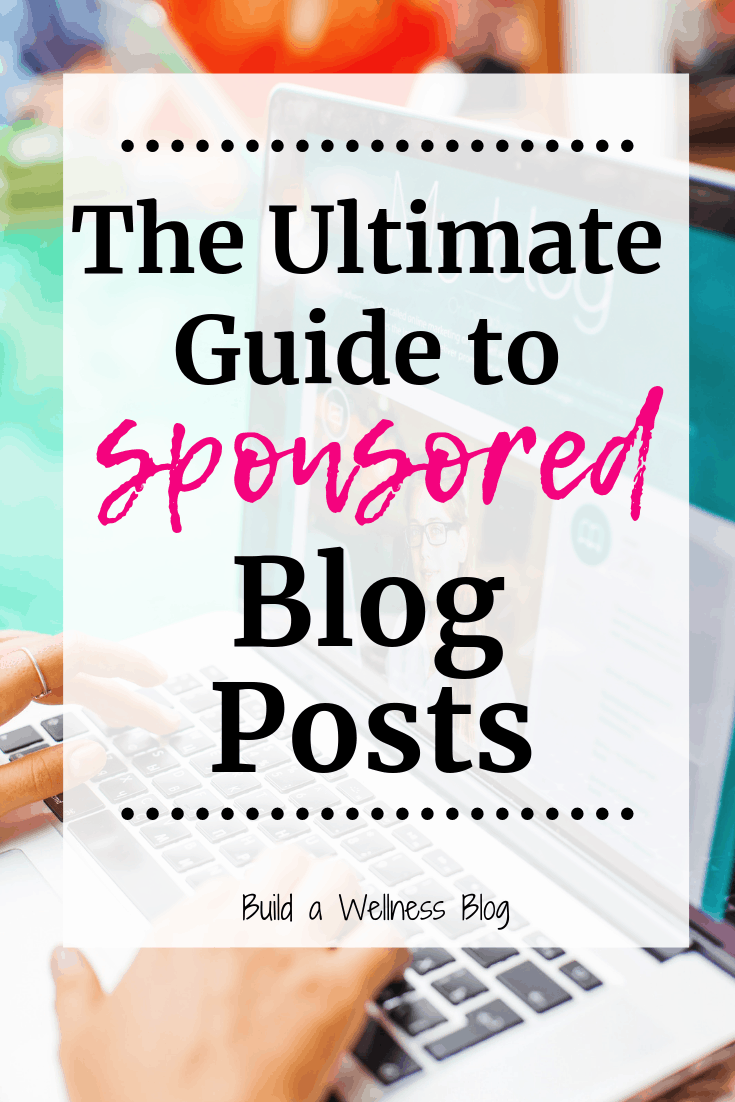
The Ultimate Guide to Sponsored Blog Posts
Have you been in the blogging game for a while, but are looking to develop more brand partnerships? Or maybe you’re brand new to this field, and are thinking about lining up your first collaboration? Either way, the resources below will help you navigate through all you need to know when it comes to securing and writing sponsored blog posts.
What is a sponsored blog post?
A sponsored blog post is when a brand pays you to feature their product or service in a blog post. Unlike affiliate marketing – where you earn a fee based on sales – sponsored content is generally paid as a flat fee.
For example, let’s say a fitness brand wanted to pay you to do a sponsored blog post featuring their apparel. Depending on your site and typical post style, this might look like a product review post or it might look like a workout post where you weave in the apparel (i.e. “I love having XYZ brand leggings for this workout, because they stay put and don’t ride up!”).
Another example might be a food brand – perhaps an oatmeal company wants to pay you to come up with a recipe featuring their oatmeal. You’d develop and photograph the recipe, and weave the brand attributes into the post.
Technically sponsored posts can be either in the form of money, product, or travel – but I’d advise you to work for money. 😉
Though back at the beginning of my blogging career I did do a few product-based arrangements – I think a lot of us have! – you’ll quickly realize that the time you spend on most sponsored blog post far outweighs the value of a small product. (Obviously, there could be exceptions for major product or travel arrangements, and only you would know if that’s comfortable for you or not).
A sponsored blog post is NOT:
- A guest post by a fellow blogger. Guests posts should be reserved for bloggers or professionals that you know and/or trust. These are written by the other blogger, and typically include a backlink or two to their website. The purpose of guest posts is to help build SEO. Guest posts are typically done for free by the other party.
- An email offering to pay for you to add a link to a post. This is a common link building strategy but they are looking for do-follow links, which is a no-no for a paid arrangement. Anything you are paid for should be a no-follow link (more deets on that further down).
How do you get sponsored blog posts?
There are typically three ways that you can secure sponsored content partnerships:
1. Blogger networks
This is the option many bloggers start with – but you’ll want to weigh whether it’s a good choice for you.
Networks are third-party websites that act like the middleman between bloggers and brands. They aggregate opportunities from various brands, and you apply for these opportunities through the network. You are only notified only if you are selected.
Some networks do also reach out directly if they think you’re a good fit for a particular brand campaign, thought that tends to be less common than the application-style opportunities.
Pros of using a network: There are lots of brand opportunities aggregated in one place; it’s a way to get in touch with brands you may not have previously thought about working with; it makes it easy to apply for several opportunities quickly.
Cons: Lower rates for sponsored blog posts. This is by far the biggest downside. Because the network generally takes a cut from the brand, the rates are generally lower than pitching directly.
If you want to try checking out the networks, here are a few that may be worth browsing. Note that some may have minimum requirements (page views or social followers) to join, while others may be open to everyone:
There are a few others our there, like Heartbeat and Linqia, however the pay for these is often very low. You can feel free to have a look at ‘em if you’d like though!
2. Brand reaches out to you
Have you gotten an email from a brand you love asking to work together yet?
If so – yahoooooo!
If not – don’t fret, my friend.
Brands have hundreds of thousands of bloggers and influencers to sift through. They may not have stumbled across your site yet. That’s OK.
One of the biggest mistakes I think people make is waiting around for brands to contact them. While it’s great when it happens, you’re missing out on a ton of opportunities if that’s your only business model. That’s why I always recommend creating relationships with brands and pitching them directly (see next section).
Also, keep in mind there are many sketchy people that will often try to take advantage of new bloggers. They may say they want to do a sponsored post, but only offer you a 40% discount on their items. Ya know, like this Insta message I recently got…
This is not a normal sponsored content arrangement – please don’t fall for these. You should never be paying to create content on behalf of someone else’s brand. You should be paid (fairly) for your time if the relationship requires posting. (There’s certainly affiliate opportunities where you would only be paid a commission, but there are no *requirements* for posting X number of times for those).
3. You pitch brands
This is by far my favorite type of partnership, because a) you’re able to be proactive and make them happen, and b) the pay is far better than influencer networks.
Pitching directly also gives you more control over the ask/deliverables, and you can usually sell yourself a bit better when directly communicating with a brand
Your best shot at pitching brands is likely going to come from relationships you develop over time. For example, perhaps you meet a food brand at an expo and give them a shout out on social. And then later, you email their rep about an interesting article you heard related to a common interest. And then after that, you go in for the pitch to work together.
But that doesn’t mean that’s your only shot – cold pitches can work well too. If you don’t know the right person to reach out to, try finding contacts via press releases, the company’s website, or by messaging the company on social media.
When I pitch brands, I generally pitch in one of two ways:
a) If I’m going to pitch a small one-off project, I’ll outline my pitch in an email.
This would include a quick summary of:
- why the brand is a good fit for your audience
- how a sponsored post would benefit the brand
- a specific idea for the partnership
b) If I’m going to pitch a long-term partnership, I’ll first start a conversation with the brand (often via phone or emails) and then ask if I can put together a full proposal.
This includes the same information mentioned above, but goes into far more detail, includes visuals or samples of work, and also includes a breakdown of several deliverables.
For example, I might pitch a series of 5 blog posts and include a list of SEO-optimized keywords that I think might work well for the posts in the proposal. Or in the first section, when I discuss an opportunity related to the brand, I might share screenshots of questions I’ve gotten on the blog related to that topic. Basically, I’m trying to bring a partnership to life in their heads.
I also try to incorporate my personality into these pitches as well, so a brand can understand what I’m like to work with. For example, I’ve been known to include a pun or two in every proposal I do. You can probably guess which brand partner this one was related to…. 😉
And lastly, I’ll include a pricing breakdown specific to this proposal on the last page.
It takes me a few hours to put these together, but they’re highly effective and I always prefer long-term work over one-off deals.
How much do you charge for a sponsored blog post?
There is no one right answer to this question.
I would say sponsored post fees are generally going to range from $200 at the very low end for a new blogger with minimal page views, up to $3000+ for established bloggers and experts in their field. That would be for one sponsored post, and that’s what the market range is, not necessarily what I’m telling you to charge.
A few factors that will go into pricing…
- Niche – a very specific niche that aligns highly with the brand can demand higher payment
- Page views – higher page views can demand higher payment, especially if you can showcase high page views on past sponsored content
- Social following – more followers = mo’ money
- Social shares – generally a sponsored post would include a share to each major platform, but if the brand is asking for additional shares on top of that, it would be reason to increase your pricing
- Email list size – bigger list = bigger benjamins
- Engagement – if you have a smaller audience but they are extremely engaged, that will give you leverage for charging more
- Type of post (i.e. review vs recipe vs workout vs other) – the more time it will take you to create, the more money you generally should charge
- Expertise (i.e. credentials, education) – your name and credibility is tied to this, so if you have a lot of expertise and are well-known in the field, you may be able to charge more
- Exclusivity – if a brand wants exclusivity (meaning they’re limiting who you can work with in other brands within the category for a certain period of time) that demands higher payment
- Licensing – if a brand wants licensing to use your photos and recipe on their site or channels, that demands higher payment
While I know that’s a lot of information, those are all good things to consider (and some of which, like licensing and exclusivity, you’d want to discuss with the brand).
There are some calculators out there that can give you starting points for evaluating what to charge – many will take into account some of these factors, like social following and page views. You can also ask around to other bloggers to see if they can give you advice on what to charge (my Facebook group is a great place to ask the tough questions!).
But above all, the number you give should be something that feels good to you.
Ask questions if you need help with pricing, for sure. But also be aware that sometimes it’s good to tune out some of the noise on what other people make you feel like you should charge.
–> For example, you might have a brand tell you “but other people only charge $X!” – and that makes you feel like you should charge less.
–> Or you might feel awesome about your partnership until you heard from another blogger that they charge 2x more and now you feel inadequate.
Sometimes, these external cues can constantly make us feel bad about pricing. Instead, do what feels good for you based on the amount of work you’re doing.
Lastly, know that pricing is not finite. You might take on a partnership and midway through shooting food photos for a post you think “I’m not getting paid enough for this!” – which means you probably are not, haha. But it’s a learning experience, and now you know for next time.
What do you need to know for the post itself?
When it comes to writing the actual sponsored blog post, there are four tips I want to leave you with – three important legal tips, and one general piece of advice:
1. Have a contract (or at least an email outline).
OK, so technically this is still before you write the actual post.
I admittedly pretty much never had contracts until the last two years. Luckily, there was only one situation where I had trouble getting paid. Soooo classic “do as I say, not as I did.” 😉
In addition to outlining payment deadlines, contracts also outline the deliverables, due dates, ownership of materials, and more. It showcases everything up front so there are no surprises down the road (i.e. you seeing your fitness photo on a billboard, when you never agreed to licensing your content).
If this sounds overwhelming – take a deep breath. Don’t let fear of legal stuff stop you from working with brands. I got my contracts online (from Businessese). If you can’t make that investment just yet, remember that a clearly outlined email with all the agreements can be very useful at the beginning.
2. Include a disclosure.
The FTC requires that you disclose any material connections in sponsored blog posts. In particular, they state “If there’s a connection between an endorser and the marketer that consumers would not expect and it would affect how consumers evaluate the endorsement, that connection should be disclosed.”
Essentially, that just means you need to tell your audience that it’s a sponsored post. Your audience should know there’s a business relationship there, so each person can personally determine how much weight to give your endorsement/support of that product.
What do you have to do? It’s very simple – at the top of your post (either at the very top, or right under an introductory paragraph) – you’ll write a simple disclosure declaring that the post is sponsored. Here’s the language I usually use:
“Disclosure: This post is sponsored by XYZ Brand. As always, all opinions are my own.”
That’s it! Here’s what it looks like on the post itself:
For a social share, it can be even more brief: just use #ad or #sponsored.
Newer bloggers sometimes feel uncomfortable disclosing these, especially if they’re starting to do multiple sponsored posts. I’ve heard concerns like “won’t my audience not trust me if they see I’m getting paid by all these companies?!”
On the contrary, disclosing helps maintain your truthfulness and shows to your audience that you care about transparency.
If you want to read up more on this, you can find full details about all of the FTC’s endorsement guidelines here.
In addition to the FTC, certain health-related professions – including dietetics, as I’m an RD – include statements about disclosing conflicts of interest in their ethical codes. That’s just another reason to be upfront with your disclosures.
3. Use no-follow links
This is another area of confusion that often comes up in posts. There are two “types” of links that you might include in a blog post:
a. Do-follow links
These are just regular hyperlinks that you include. Do-follow means that when Google crawls your site, it “follows along” to those links.
This sounds confusing, but essentially it just means the link has “SEO juice” for Google. Google uses links to sites as part of their search algorithm – so a site with a TON of links from other sites is generally going to rank higher than a site with TWO links from other sites. It’s kind of like a popularity metric.
b. No-follow links
Unlike a do-follow link, a no-follow link is not followed or prioritized by Google.
Why have these? Well, there was a problem that came up a while back with this system of links establishing SEO juice – and that was people using sketchy strategies to get more links. This included tactics like spamming blog comments (which are almost always defaulted to no-follow now) and, among other things, trying to pay for links.
Essentially, one website would pay a whole lotta other sites to link back to their website, and that would help boost their SEO and rankings.
Google caught on pretty quick, and that’s where this no-follow tag came into play. No-follow means that the link works exactly the same for a user, but that Google doesn’t give any weight to it (or perhaps, nearly as much weight – I know there’s some debate on this in the SEO community). This means people can’t just pay for a bunch of great links to improve their SEO.
As such, the no-follow tag is intended for use when you are getting compensated (either via money or product) to do a sponsored blog post (or using affiliate links).
So how do you do this? It’s very easy. When you link to the sponsor in the post, you’re going to go the html editor in WordPress, and add in the no follow tag.
Here’s an example. Let’s pretend I was getting sponsored by Enjoy Life (an allergy friendly food brand) to do a recipe over on one of my websites. After I’ve added the link using the text editor, I’m going to flip over to the html editor and this is what I might see:
<a href=”https://enjoylifefoods.com” target=”_blank” rel=”noopener”>Enjoy Life</a>
The first part is the link itself, the second part is because I have it open in a new tab, and the third part is the anchor text it was linked to.
Now here’s how I would add the no follow tag:
<a href= “https://enjoylifefoods.com” target=”_blank” rel=”nofollow noopener”>Enjoy Life</a>
That’s it! You just add it right in the code and you’re all set.
Some people use plugins to do this but I’d recommend against it. If a plugin breaks and you for some reason lost the coding in past posts, it’d be a big pain in the booty to have to go fix ‘em all. Manually coding them only takes a minute.
4. Be authentic.
This is obviously the non-legal one, haha. If you’re growing a site, your readers will come to know and trust you. That means you want to be authentic in any products that you’re recommending.
When your site starts growing and you start hearing from more brands about potential collaboration opportunities, it can be tempting to want to accept everything and anything (ch-ching!). But doing so dilutes your brand. There will be more opportunities and more money. Don’t accept sponsored content requests that are off-brand or that you don’t actually enjoy, just because they pay well.
I got offered to do a partnership with a certain food brand for a new product launch. But when I got the product, I did not like it at all. I immediately emailed and regrettably ended the arrangement. While it was a bummer to lose the money, it feels way better to uphold my integrity about the content I put out.
Similarly, look for brands that allow your creativity to shine through. If a brand wants you to include 700 talking points and edits over the entire post draft you submit, you can lose your voice – and authenticity – in that process.
A quick example – one of my favorite partnerships knows that I love making silly rap videos, and we worked together on a sponsored rap video as part of our arrangement. That’s a brand that really respects me and my voice.
Figure out a way to showcase the brand or product in a way that fits naturally with your site and feels (and is!) authentic.
There you have it!
I hope this was a helpful overview of sponsored blog posts. You now know what they are, how to find brands to work with, a loose idea of what to charge, and key tactics for the post itself. Now go get ‘em!
PS – Want to learn about other ways to earn moolah through your site? Check out other ways to make money blogging in this post!
Share: What other questions do you have about sponsored blog posts?



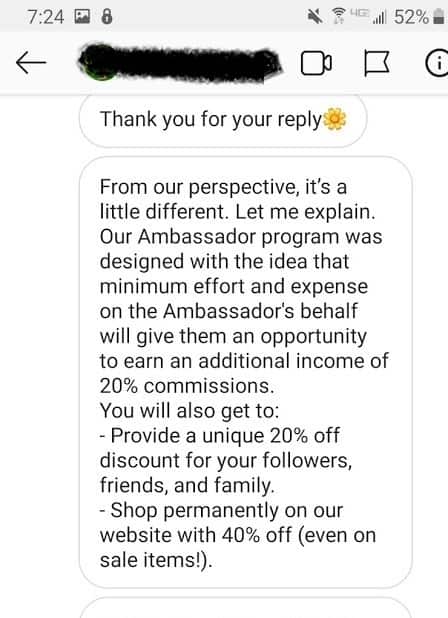
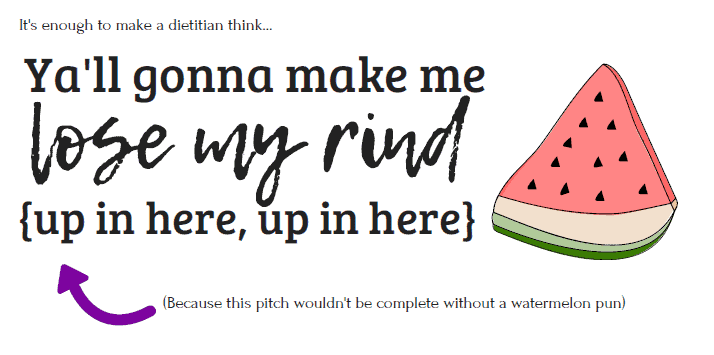

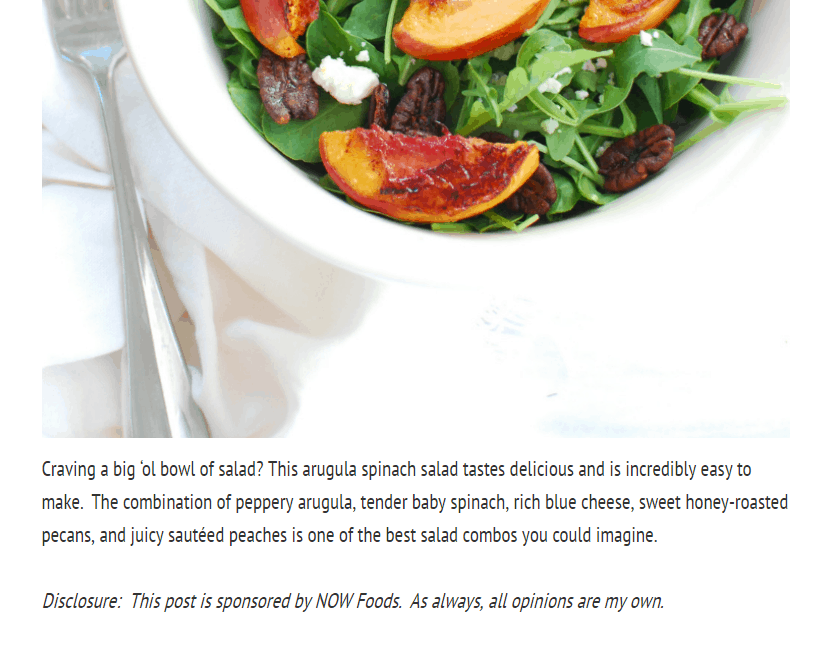


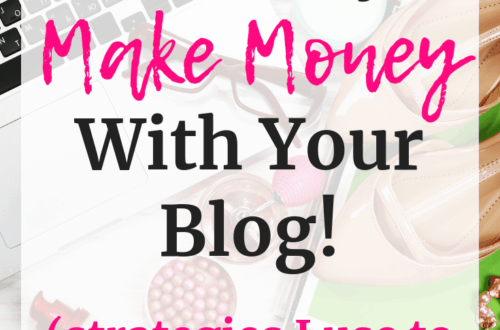
3 Comments
Megan
So, companies look for followers….what about if you don’t really have them. When you blog, do you or is it recommended that you have an Instagram and Twitter account?
Chrissy Carroll
If you’re looking to do a lot of sponsored work, I would recommend growing at least one social platform as it’ll give you more leverage for pitching sponsored posts. But, even if you don’t do social media, that’s not to say you couldn’t pitch a company. On one of our smaller sites, we did a sponsored post that was only on the blog. So it’s possible, but definitely easier to pitch if you can show that you’ve got social following (in addition to blog visitors).
Jen Dodrill
This is so thorough! Thank you. For the first time I feel like I understand no-follow and do-follow links. I’ve pinned this to refer back to!